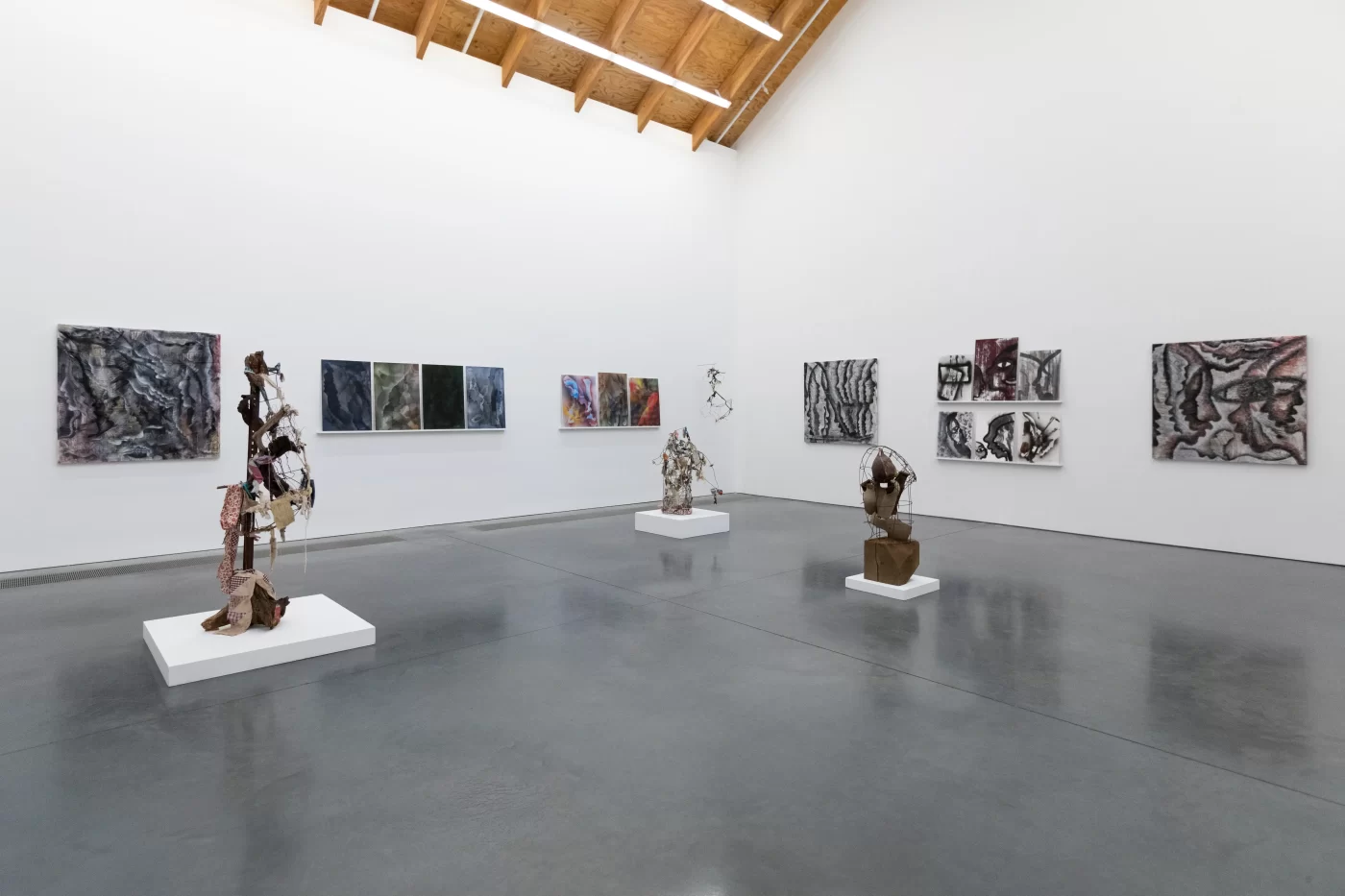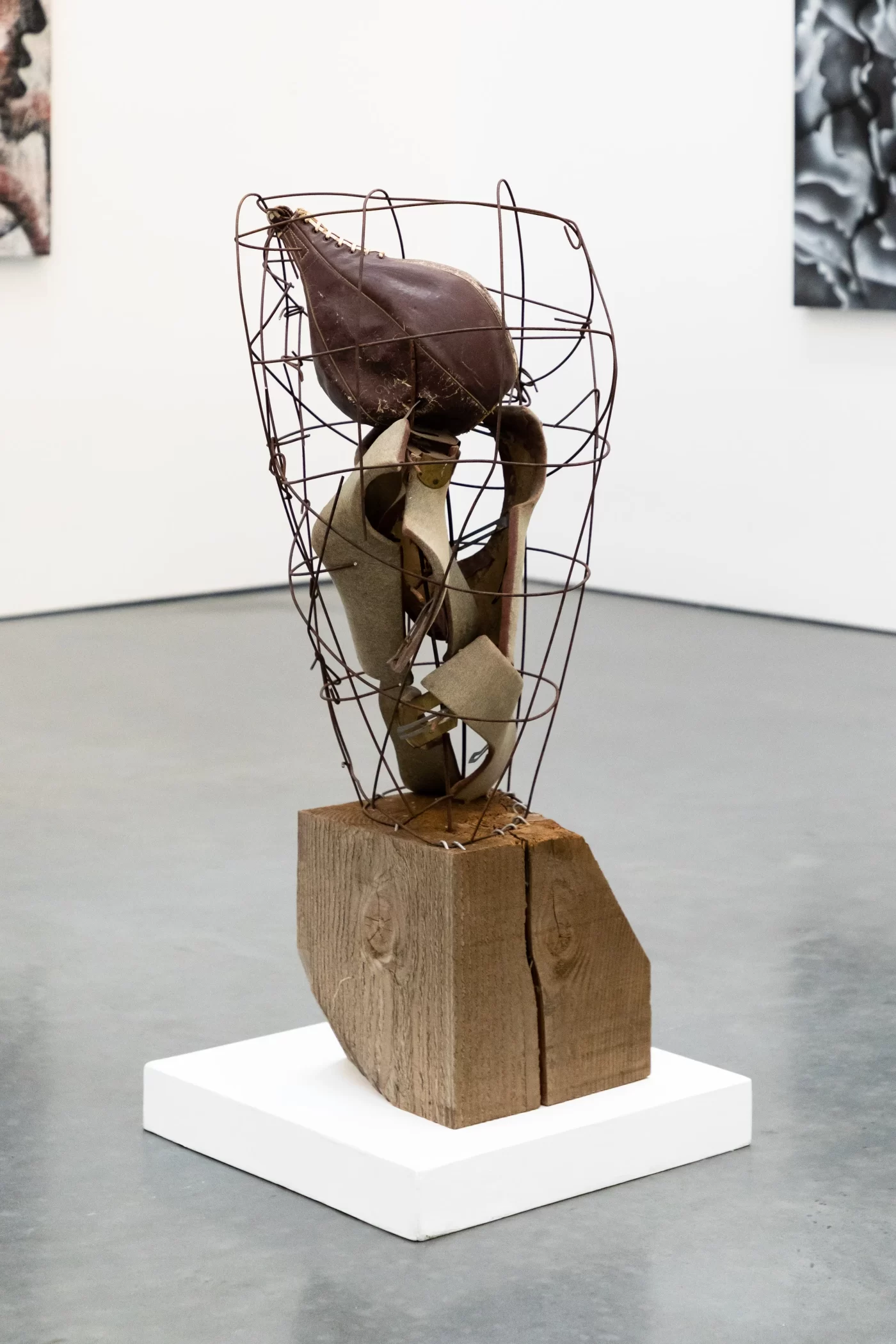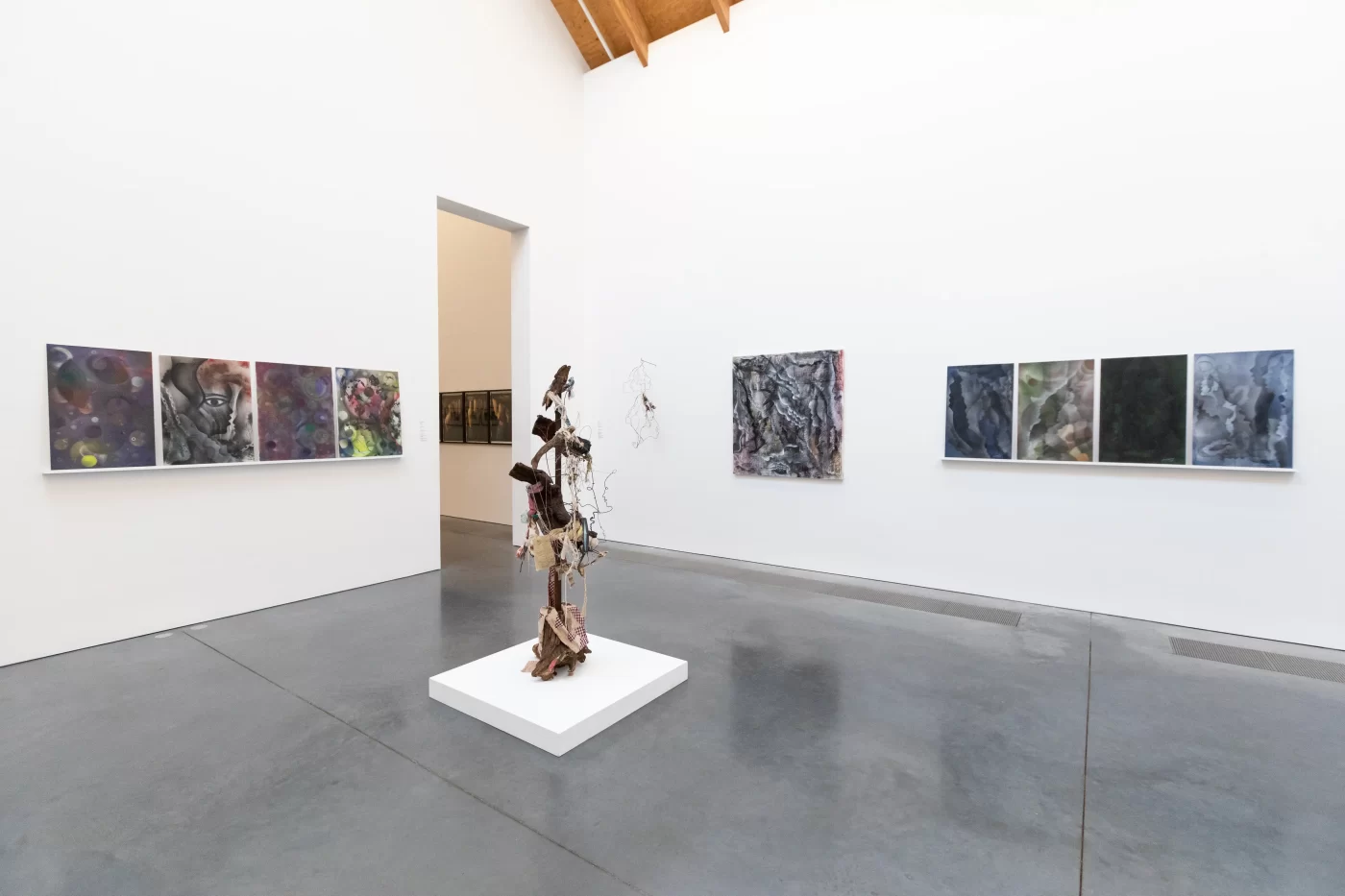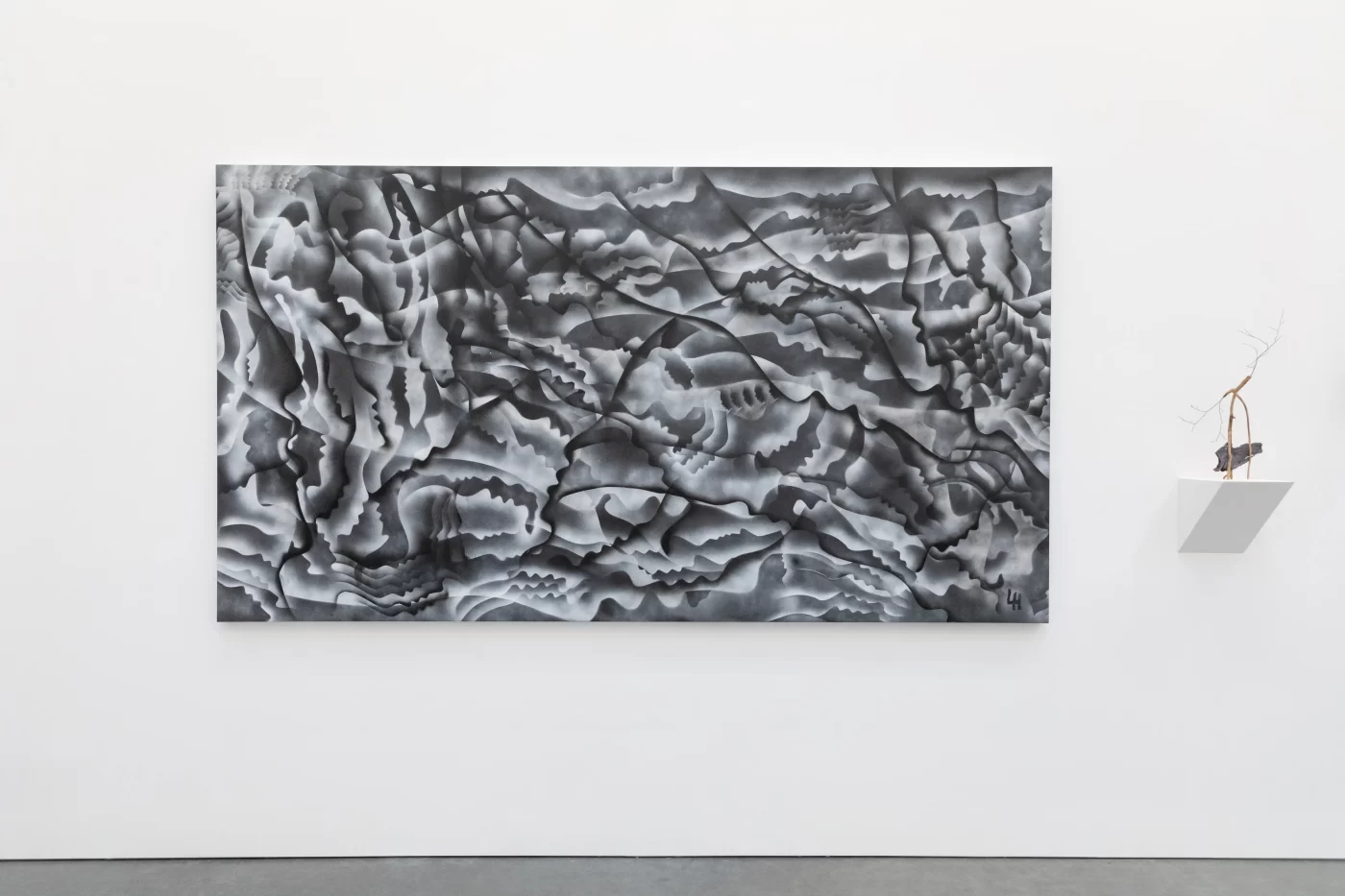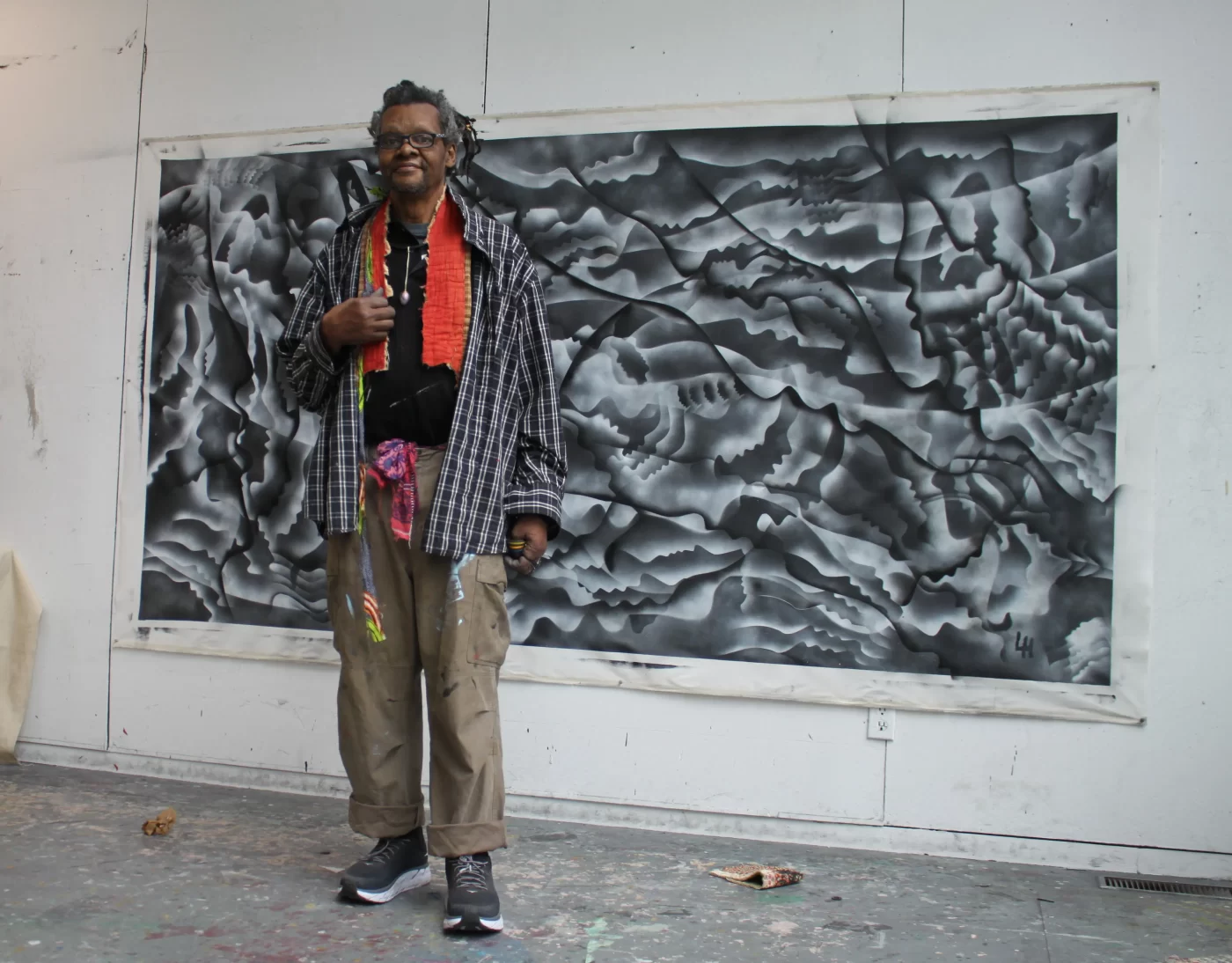In five weeks, Holley created over 100 works, including sculpture made largely from objects found on the property. Titles of the work—such as Fragile like a Child, Working to Loosen our Chains, Battered, Blood from the Fields Back Home, and I Can Always Fly—read like lines from an epic poem describing struggle, defeat, yet resolute constancy and grace.
Born in Jim Crow-era Birmingham, Alabama in 1950, the seventh of his mother’s 27 children, Holley experienced a harrowing childhood of foster homes and forced labor. At age 11, he was locked up for two years in the notorious Alabama Industrial School for Negro Children for violating curfew imposed by Birmingham city commissioner Eugene “Bull” Connor. Holley spent the 1970s working a series of odd jobs, and in 1979 he returned home for the funeral of his young nieces who perished in a house fire. To memorialize the children when there was no money for a tombstone, Holley found a piece of sandstone and carved it into a loving tribute. In the process he discovered his own voice and a new path in life.
Holley remained in Birmingham on a 1-acre property that he filled with visionary sculpture constructed from found objects. In the mid-1980s curator and “outsider” artists patron William Arnett included the artist in the exhibition Souls Grown Deep: African-American Vernacular Art of the South, proving the vitality and rootedness of an Afro-Atlantic aesthetic and spiritual practices in the region, and challenging the contemporary art world to expand its boundaries.
Holley’s work has been collected by museums across the U.S., including the Smithsonian American Art Museum, Washington, DC; Metropolitan Museum of Art, New York; Whitney Museum of America Art, New York; and the Philadelphia Museum of Art, Pennsylvania.


